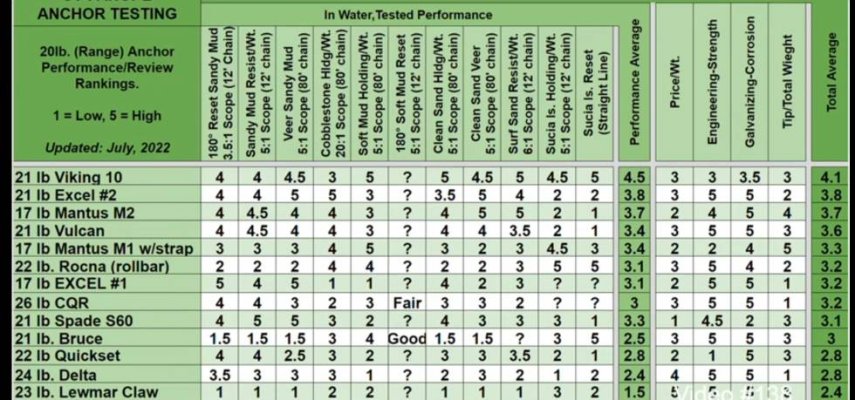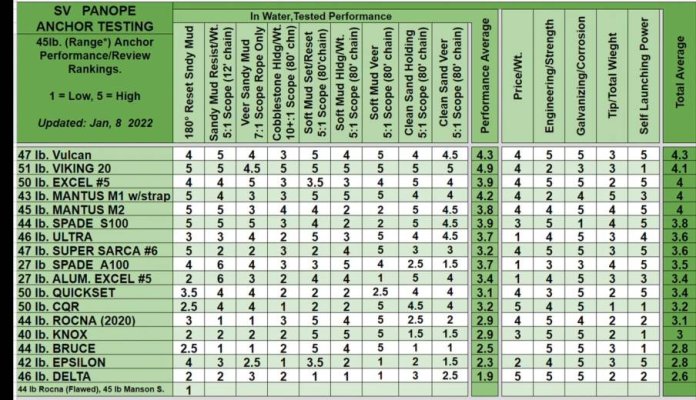Forum member MVWEEBLES contacted me and asked for my thoughts regarding this Ultra anchor mystery. Rather than answer him privately, I will share my thoughts with all of you.
In no particular order of importance-
1 - The "saddle" of the Ultra Swivel produces a "side effect" of effectively lengthening the shank. This will SLIGHTLY change the geometry of the anchor and could have an effect on setting characteristics. Again, this effect will be very small and I would be surprised if this alone would make such a drastic change.
----------------------------
2 - In a prefect world, each size of anchor should be made of material that has just the right thickness based on the size of the anchor. The reality is that manufacturers have limited available plate thicknesses to choose from.
What could be happening here, is that the 60kg version was built from plate that tended toward the "thin side" of what provides the needed strength, while the 80kg version needed thicker material which ended up being a little thicker than necessary (the assumption is that an "intermediate" plate thickness was not available).
The final weight of the Ultra anchor is determined by how much LEAD ballast is added after the anchor is fabricated.
The result, is that the 80kg version might have a lower ratio of ballast-to-total weight and a corresponding reduction of "tip-to-total weight ratio", which is an important factor for penetrating ability.
------------------------------
3 - Assuming that both of these anchors (60kg, 80kg) were using absolutely identical rodes, and with fairly short scopes, the smaller anchor would be at an advantage due to the chain weight being a higher percentage of the entire system weight.
In other words, because less force is required to drag/set the smaller anchor, chain catenary will be greater, with the result of the smaller anchor being pulled closer to horizonal than the larger anchor.
Again this is only applicable if scope is short (for the depth).
---------------------------
4 - Because the anchors/vessel in question is not owned by the OP, I have to ask the question: Are you certain that the chain marking system is the same for both anchors and are you absolutely certain that both anchors were receiving the same scope?
--------------------------
I do not consider any of the above ideas to be a "smoking gun". All of these would normally have barely noticeable effects. But, if this particular seabed is "on the ragged edge" of what an Ultra anchor can penetrate, then I could easily believe that several of the above factors COMBINED might explain the situation.
Steve




